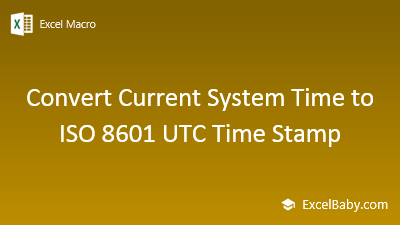Hello Excel Gurus!
How can I format an Excel TimeDate from a double to mm/dd/yyyy hh:mm:ss.000
Thank you!
Please call this sub to demonstrate my question:
How can I format an Excel TimeDate from a double to mm/dd/yyyy hh:mm:ss.000
Thank you!
Please call this sub to demonstrate my question:
VBA Code:
Public Sub TimeWithMS()
Dim Timestamp As Variant
Timestamp = Evaluate("Now()")
Debug.Print Tab(0); "Timestamp:"; Tab(15); Timestamp
Debug.Print Tab(0); "How do you format the Timestamp as: mm/dd/yyyy hh:mm:ss.000? (milliseconds required)"
End Sub





